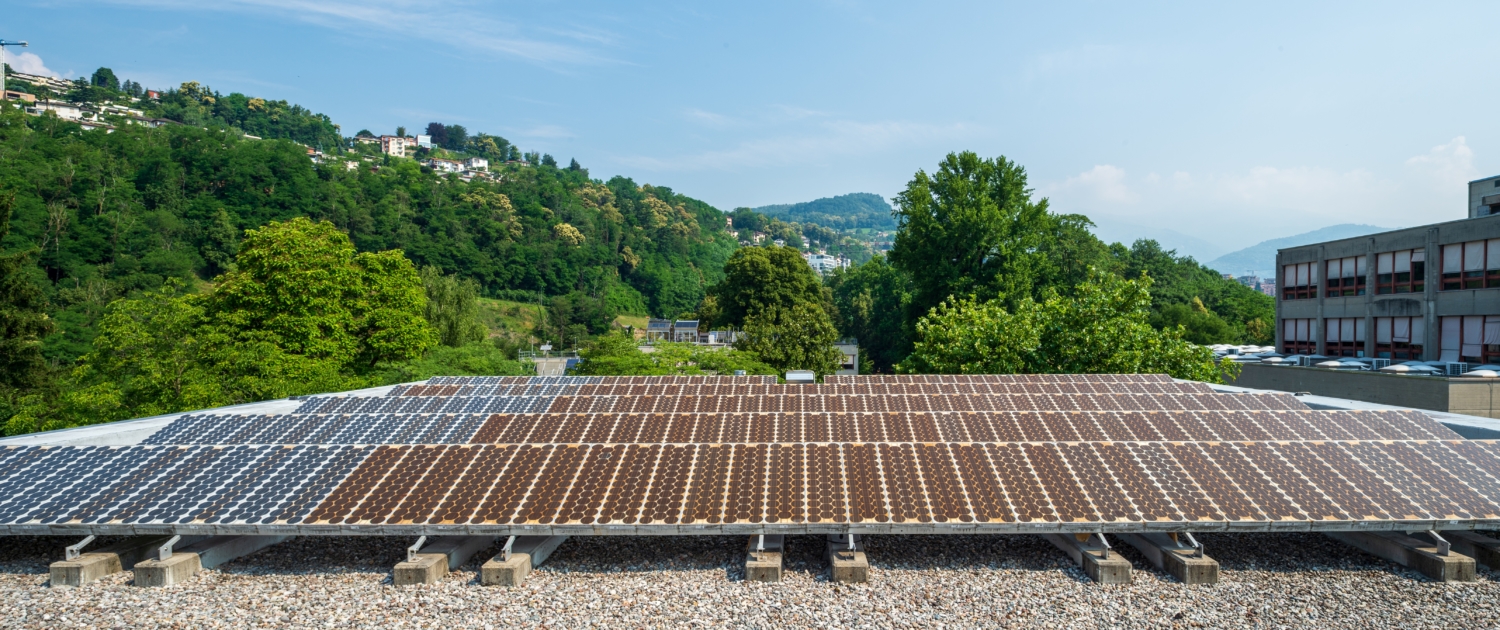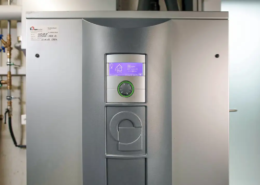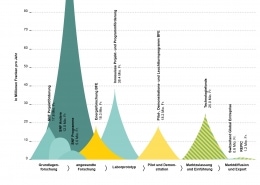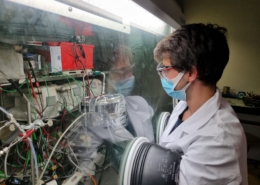Connected to the grid for 40 years - Europe's first photovoltaic plant
Ticino is considered to be Switzerland's sunniest region. It is therefore not surprising that the first photovoltaic system in Europe was connected to the public power grid there. that was in 1982. And the plant is still running today - almost as it did back then.
Ticino Solare, or TISO -10 for short, was installed on the roof of a technical college building near Lugano. On May 13, 1982, the south-facing system delivered electricity to the grid. The installed capacity: 10 kWp - hence 10 in the name. This was exceptional for that time. Later, the panels were transferred to another building.
The condition, texture, color and power of the solar cells were regularly checked and measured. An examination after 35 years of operation came to the conclusion that the cells showed signs of wear - keyword corrosion, burnt spots (hot spots), cracks in the cells or defects in connecting cables. But:
The majority of the modules still functioned well and still delivered at least 80 percent of the power over all. Solar panel manufacturers usually guarantee a service life of 25 to 30 years.
Energeiaplus asked Mauro Caccivio what makes TISO-10 special. Caccivio heads the photovoltaics laboratory at SUPSI, a university of applied sciences in Ticino.
Energeiaplus: TISO-10's solar cells have been producing electricity from solar energy for 40 years. How amazing is that?
Mauro Caccivio: It is absolutely amazing. When you look at the black-and-white photos from back then and realize the technological progress that has been made since then, you understand how visionary the project was and how brave the team behind it was. TISO was significant for the subsequent massive diffusion of solar energy: photovoltaic technology, even at the beginning of its industrial phase, was capable of feeding the energy needed to manufacture solar modules back into the power grid many times over. This is crucial to keep the impact on the environment and nature as low as possible, and it is even more true today, given the enormous advancement we are witnessing.
At the time, the plant was the first in Europe to be connected to the power grid. In what way was that an event?
It was a real first for the time: such a huge plant, mounted in free-standing structures and connected to the grid with an industrial approach, had never been seen before in Europe. Moreover: in 1982, solar modules were not yet a mass product and were therefore expensive. They were mainly used to supply energy to remote chalets in the mountains. The idea behind the TISO project was to accurately and constantly monitor the evolution of performance, which led to an important collaboration with the European Joint Research Test Center, located 50 km from Lugano. This idea was the birth of solar research in Ticino and made it possible to set up the Laboratory of Photovoltaics at SUPSI.
At that time, the panels had a power of 10kWp. Extraordinary for that time. Why? Today the panels are much more powerful.
The panels were carefully selected. ARCO Solar was the first manufacturer to enter the megawatt range in 1982, and its technology also proved reliable in preliminary tests. Today, we are approaching the terawatt scale worldwide. So the power output today is a million times higher! The modules of that time came directly from space technology and had an efficiency of 10 percent. The record efficiency of today's modules is 25 percent. Further developments show that an efficiency of 30 percent is realistic, as with solar arrays from space.
have the panels now been in use for 40 years? What signs of age are showing?
forty years is a long time, and signs of aging are readily visible on a large percentage of the panels. Among the most common problems are hotspot issues, mainly related to the connections not being optimally connected. Peeling of the back foil is another critical issue. We found that the 288 modules came from at least three different production cycles and that one of the formulations was particularly good, so that the performance of the best modules is still within the warranty conditions after 40 years.
The TISO-10 cells are also a research subject. What do the cells contribute to the development of today's panels?
Long-term observation of a PV system like TISO provides research with important insights into the effective aging mechanisms on how to simulate them in an accelerated way. For example, after 20 years of operation, a special project by SUPSI and JRC attempted to estimate the average time to failure of TISO. Conclusion: based on the accelerated life tests, it is reasonable to assume that the modules can continue to provide usable electrical energy for 10 to 15 years. In fact, the modules have exceeded projections, as we were able to show with the 35-year update. And the critical points such as insulation problems and hotspots were correctly identified.
Manufacturers guarantee a lifespan of about 25 to 30 years for the production of solar power with solar cells. What distinguishes today's panels with those of TISO-10?
TISO's panels are smaller compared to today's technology and have thicker cells, which has proven to make them very robust. I would say that this is their main advantage over today. On the other hand, testing and certification procedures have improved a lot, as well as knowledge about materials and their aging. The efficiency of the modules has increased incredibly, and today's technological and industrial processes allow constant improvements. It is clear that a guarantee of 30 years is a challenge in several respects, but with the appropriate quality controls and materials, we can predict a long life even for the modules sold on the market today.
Let's look back to 1982. What was the status of solar energy back then?
At that time, solar energy was really still in its infancy. The price per watt for TISO modules was 100 times higher than today, and the solar cells were made from silicon waste from the electronics industry. The Tour de Sol, the first race with solar-powered vehicles, gave photovoltaics a boost in Switzerland.
With the mass production of PV modules, prices have dropped. This - along with the goal of decarbonizing the energy supply - eventually contributed to the widespread adoption of PV.
Ticino is considered the sunshine room of Switzerland. Was this the reason why the first plant was connected to the grid in Ticino of all places?
That is rather a remarkable coincidence. Ticino is the third largest hydropower canton in Switzerland. So the importance of renewable energies is well known here, and photovoltaic modules were necessary to supply electricity to the "rustici" in the Alps. in 1978 the first modules, coming directly from space technology, arrived in our canton. in 1982 the TISO adventure began with the participation of the company Invertomatic in Riazzino for the production of the inverters. I would say that pioneers, interest, need and the Ticino sun together contributed to this development.
How has TISO-10 influenced the research and development of PV?
Certainly we can say that our group in SUPSI was founded thanks to this experience. At ISAAC, the Institute for Applied Sustainability in the Built Environment, from which the original group emerged, new multidisciplinary topics have been added such as smart grids, mobility and building integration. This has resulted in two spin-offs (Hive power and i-Win) and several small companies active in the solar sector.
Apart from our developments, the PV system, which has been scientifically monitored during 40 years, has been a source of information for several scientists around the world. We will celebrate this at the next World Conference in Milan, where we will present a brochure at a special event with the participation of the European solar industry.
Meanwhile, Switzerland has fallen behind China in the production of solar cells. Can Switzerland catch up again? What is your assessment?
Switzerland has the know-how and experience to take a leading role in the new phase where the industry and production will be back in Europe (the forecast is for 20 GW of local production by 2025).
Meyer Burger Group, headquartered in Thun BE, plans to increase PV panel production to 1.4 GW this year and to produce 7 GW/year in 2027.
Several Swiss companies are leading the way in building-integrated photovoltaics to exploit the annual potential of 67 TWh of electricity production from roofs and facades. Last but not least, research is working intensively on new developments, with EPFL/CSEM recently achieving a record efficiency of over 30% for silicon thin-film double-layer solar cells.
I would definitely say that the future is bright and solar!
Interview: Brigitte Mader, Communications, Swiss Federal Office of Energy
 SUPSI
SUPSI
 SuisseEnergieConseils pour des pompes à chaleur géothermiques plus efficaces
SuisseEnergieConseils pour des pompes à chaleur géothermiques plus efficaces  Interaktive Übersicht zur Cleantech-Innovationslandschaft
Interaktive Übersicht zur Cleantech-Innovationslandschaft  ZVG, Martin Omlin«Wärmepumpen werden oft zu gross dimensioniert.»
ZVG, Martin Omlin«Wärmepumpen werden oft zu gross dimensioniert.»  EMPADie Batterie neu erfinden
EMPADie Batterie neu erfinden 
 SuisseEnergie
SuisseEnergie Copyright: Ökostrom Schweiz
Copyright: Ökostrom Schweiz
Trackbacks & Pingbacks
[…] Letztere hat einen ähnlichen Test an einer mehr als 40 Jahre alten Photovoltaikanlage in der Schweiz durchgeführt. Diese hat auch nach dieser langen Dauer noch 80 Prozent der ursprünglichen Leistung, wie das schweizerische Bundesamt für Energie veröffentlich hat. […]
[…] Letztere hat einen ähnlichen Test an einer mehr als 40 Jahre alten Photovoltaikanlage in der Schweiz durchgeführt. Diese hat auch nach dieser langen Dauer noch 80 Prozent der ursprünglichen Leistung, wie das schweizerische Bundesamt für Energie veröffentlich hat. […]
[…] Jahren aus, sie dürften aber im Normalfall noch deutlich länger Strom liefern. Die vermeintlich älteste Photovoltaik-Anlage in Europa steht im Tessin und gibt auch nach über 40 Jahren noch Strom. Mit anderen Worten: Nach […]
[…] Seit 40 Jahren am Netz – die erste Photovoltaikanlage Europas | BFE-Magazin energeiaplus | Energie… […]
[…] du laboratoire PV de la Haute école spécialisée du Tessin (Supsi) dans un entretien accordé au magazine Energeia. « En 1982, les modules solaires n’étaient pas encore un produit de masse. Ils […]
[…] 2022 | BFE-Magazin energeiaplus | Energy magazine of the Federal Office of […]
Kommentare sind deaktiviert.